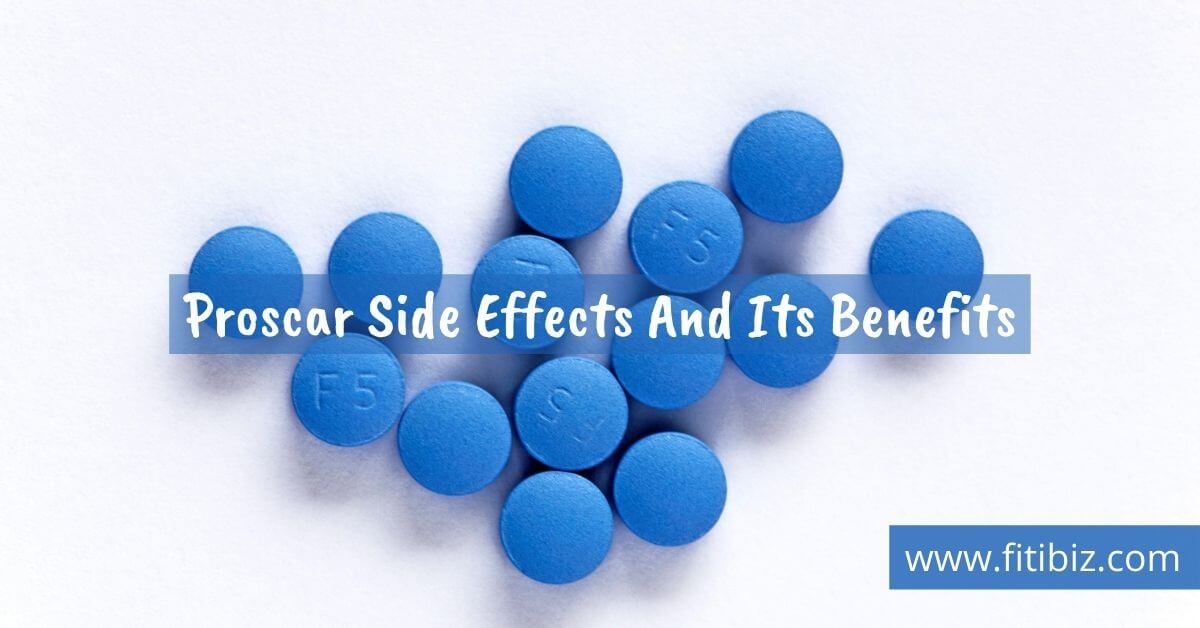10 Symptoms Of Osteoarthritis
Specifically, age does not matter at all when it comes to the most painful, chronic, never-ending, and long-lasting disease called Osteoarthritis whether you are in your 20’s or you just have crossed 50’s. Surely, Symptoms Of Osteoarthritis can easily be found not only in adults but a school or college going students reportedly go through this because of a high deficiency level in calcium, proteins, and any other required elements or substances which are meant to be necessary for our body to function properly.
As per the doctors and medical science, Osteoarthritis is recognized as one of the inflammatory forms of Arthritis, which is globally well-known for causing and letting people endure endless joint pain in their body parts such as in fingers, elbows, shoulders, feet, and etc. People usually feel or experience Osteoarthritis pain when they try to move their body parts.
Furthermore, When a person is suffered and cried from this painful Osteoarthritis including my mother as well, it can be seen and understood with his or her swollen, inflamed, and overstructured parts of the body that how much pain and stiffness he or she is going through.
Whenever you feel and experience any sort of stiffness or you find any difficulty in moving your body parts such as hands, feet, shoulders, it always better for you to get yourself updated with our 10 symptoms of osteoarthritis. which will surely help you to stop this ailment from being never-ending and more severe in the future. But first of all, we will look at the description of what exactly Osteoarthritis is and how it affects people of different ages.
An Introduction To What Is An Osteoarthritis And How Does It Occur?
Osteoarthritis is appeared to be a common problem from which, people of all ages suffer. According to the doctors, it certainly affects the parts or joints of our body which are used to bear our whole weight such as knees, hips, spine, and feet.
Additionally, In a healthy joint, a coating of tough but smooth and slippery tissue is commonly known as cartilage covers the surface of the bones and provides assistance to the bones in order to make free body movements against each other. When osteoarthritis affects our joints, the parts of the cartilage becomes thinner and the surface of the bones becomes rougher. This leads the joint parts of our body to stop moving or functioning smoothly and properly as it should be.
What Exactly Cartilage Is For Our Bones And How It Is Associated To Osteoarthritis?
If we talk about what exactly Cartilage is – well it is an important tissue that is considered a firm, rubbery material used to cover the ends of our bones in normal joints in order to make frictionless body movements. The major functionality of cartilage is to reduce the chance of friction in the joints so that moving of joints against each other will certainly be easy.
When cartilage gets broken down or damaged, all the tissues and cells within our joints gradually become active than normal as the body tries to repair the damage. And also, this kind of repair process definitely and completely change the structure of our joints or bones but also allow the joint to work normally and effortlessly and without causing any pain and stiffness in the body.
10 Basic And Important Symptoms Of Osteoarthritis You Must know
Medically there are tons of reasons and symptoms that could be noticed and brought out to the public about osteoarthritis disease, but here we have introduced the 10 most common and well-known symptoms from suffering Osteoarthritis.
- The pain which is felt by every Osteoarthritis patients when they try to make body movements is one of the symptoms or signs of Osteoarthritis disease. If you are suffering and enduring regular pain in moving your joints or parts or you notice swollen and inflamed parts and area of your body, then make sure to an take an action without getting delay and don’t forget to fix the appointment with the doctor.
- Generally, When your joints are affected by Osteoarthritis always hurts and causes you great pain before and after making the body movements. And also the affected joints usually have gone to be swollen.
- When you feel stiffness and rigidity in moving your body parts for a very long time, then there may be a high chance of contacting you from Osteoarthritis. When the cartilage – (covers your end of the joints)breaks down or gets damaged you specifically experience hardness and difficulty to move your body parts.
- When your body completely goes in the inactive stage or if we say you awaken after asleep, you feel this kind of rigidity and stiffness in moving your body parts. Then no doubt this is also the symptom of Osteoarthritis.
- Mild Swelling And Tenderness can also lead you to Osteoarthritis and considered one of the symptoms of Osteoarthritis you must be aware of. Your Osteoarthritis affected joints or body parts can feel tenderness and mild swollen when you try to apply force or a little bit pressure to them or if we talk about near them.
- When you realize that you have the lost ability to stretch your body parts in various correct postures or Osteoarthritis does not allow you to show your body’s flexibility anymore. Then this is also one of the symptoms or reasons you are suffering Osteoarthritis.
- When your joints have spurred bones due to which you bear heavy pain in your body. Spurred bones are basically defined when extra bones are deposited into the affected joints of your body.
Some Other Symptoms
Osteoarthritis problem is one of the most common kinds of arthritis, that is affecting millions of people around the world. This problem occurs when the protective cartilage that makes the ends of your bones like cushions, is wearing down over time. Although the problem of osteoarthritis is able to damage any joint in humans. Basically, this disorder is most commonly affects joints in your knees, hands, spine, and hips.
The osteoarthritis symptoms can be managed normally. Although the damage to your joints can not be reversed. However, maintaining a healthy weight, staying active, and some kinds of treatments can slow down the progression of this problem. Also, it can help you to improve pain and joint function. Osteoarthritis symptoms may often develop very slowly and it can worsen over time.
Signs and symptoms of osteoarthritis include:
- Extreme Pain: Your affected joints can be hurt during or after the movement.
- Stiffness: Your joint stiffness can be the most noticeable symptoms upon awakening or after being inactive.
- Tenderness: Your body joint might feel tender when you put some light pressure to or near it.
- Loss of flexibility: You might not be able to move your joint through its complete range of motion.
- Grating sensation: You may observe a grating sensation when you utilize the joint, then you might hear crackling or popping.
- Bone spurs: These additional bits of bone, which appear the same as hard lumps it may form nearby the affected joint.
- Swelling: This problem can be caused by soft tissue inflammation around the joint.
Causes of Osteoarthritis
Osteoarthritis problem occurs when the bone cartilage that cushions the ends of bones in your body joints gradually deteriorates. Cartilage is a slippery, firm tissue that allows almost frictionless joint motion. Basically, when the cartilage wears down entirely, then the bone ends will rub on the other bone end.
Osteoarthritis problem has usually been introduced to as wear and tear disease. But rather than the breakdown of cartilage, the problem of osteoarthritis affects the entire joint. Basically, it causes changes in the bone and also degeneration of the connective tissues, which are responsible to hold the joint together and attach bone to muscle. In addition, it causes inflammation of the joint lining.
Complications and Risk Factors of Osteoarthritis
The problem of osteoarthritis is basically a degenerative disease, which can worsen over time, usually resulting in chronic pain. However, joint pain and stiffness may become severe enough that can make some daily tasks difficult. Although sleep disturbances and depression can result from the pain and inability of osteoarthritis. Some factors that can improve your risk of osteoarthritis may include:
- Older age: The chances of osteoarthritis problem may increase with the growing age.
- Female: Women are more prone to develop osteoarthritis problems, although it is not obvious why.
- Obesity: If you are carrying extra body weight then it contributes to osteoarthritis problem in several ways, hence the more you weigh, then the greater your risk. Enhanced weight adds more pressure to weight-bearing joints, such as your knees and hips. Also, fat tissue produces proteins that can cause some harmful inflammation in and around your body joints.
- Joint injuries: Injuries in your joints, such as those which occur when you are playing sports or from an accident, thus it can increase the risk of osteoarthritis problem. Even those injuries that occurred many years ago and apparently healed can raise your risk of osteoarthritis.
- Repeated strain on the joint: If your daily job or any sport that you play, places some repetitive stress on your joint, then that joint might ultimately develop a problem of osteoarthritis.
- Genetics: Some people may inherit such a tendency to develop an osteoarthritis problem.
- Bone deformities: Some persons are born with defective cartilage or abnormal joints.
- Certain metabolic diseases: These may include some problems such as diabetes and a condition in which the body has too much iron known as hemochromatosis.
What Do The Doctors Say About Spurred Bones?
Bone spurs are those bones that could make their place in any bone but they are most commonly found and seen in joints. where two or more bones come together this is the scenario of spurred bones that cause people to feel unbearable pain.
Also, where muscles, ligaments, or tendons are firmly associated and attached to the bone, bone spurs activates itself.
Most affected parts of the body from spurred bones are necks, spine, shoulders, hip, knee, toes, and heel.
- The gradual emerging of Osteoarthritis should or can’t be taken for granted at all. With every second of passing time, Osteoarthritis enters into your joints or body parts resulting in the future, it is presented to you in the form of endless medical checkups and x-rays which continue to go with whole your life.
- Don’t take it easy or dare to neglect “when you hear a sound like Cracking And Crunching while moving and stretching your body.
Basically, people who are affected by Osteoarthritis usually hear the sounds of cracking and clicking when they try to move their joints or body. These are the sounds of bones which are rubbed together because of worn and damaged cartilage to cushion them. As we have known here that cartilage is required to make every joints movement softer without introducing to the friction.
- When Osteoarthritis targets specific locations in your hands called end joints of your end as compare to rheumatoid arthritis which certainly targets knuckles sections of your hands.
- Osteoarthritis tends to targets only one side of the body or you may say half of the body when you get affected by it due to some valid circumstances. If you feel that you are affected or suffering only sided body and joints pain then you must see your doctor.
- Here you don’t have to undergo any blood test process or any sort of abnormalities. This painful disease called Osteoarthritis can only be diagnosed and tested by just X-rays and any physical examination.
Diagnosis of Osteoarthritis
During your physical examinations, the doctor will examine your affected joint for any type of problems such as swelling, tenderness, flexibility, and redness. Basically, this physical exam may include the following:
Imaging tests
It will help your doctors to capture some clear pictures of your affected joints, consequently, your doctor may recommend the following to you:
X-rays: Well, your cartilage does not expose up on X-ray images, but the loss of cartilage can be revealed by the narrowing of the space among the bones in your joint. An X-ray test image can also show bone spurs around your joint.
Magnetic resonance imaging (MRI): An MRI test is to uses some radio waves and a very strong magnetic field. Then it will produce detailed images of your bones and the soft tissues, also it including cartilage. An MRI is not ordinarily needed to diagnose the problem of osteoarthritis. But it can help give more information in complex cases.
Lab tests
Doctors may analyze your blood or joint fluid, basically, it can help them to confirm the diagnosis.
Blood tests: However, there is not any blood test available for osteoarthritis problem, certain tests may help your doctor to rule out other causes of your joint pain, such as problems of rheumatoid arthritis.
Joint fluid analysis: Your doctor may utilize a needle to draw out fluid from your affected joint. This fluid is then examined for inflammation, other problem and to determine whether your joint pain is caused by infection or gout rather than osteoarthritis.
Treatment of Osteoarthritis
Osteoarthritis problem can not be converted, but treatments for this problem can decrease pain and help you to move properly.
Medications
Some medications that can help you to relieve the symptoms of osteoarthritis problem, primarily pain, and others may include:
Acetaminophen
Acetaminophen such as Tylenol and others has been displayed to help some other people with osteoarthritis problems, who have from mild to moderate joint pain. Taking more doses than the recommended dose of medicine acetaminophen may cause liver damage.
Nonsteroidal anti-inflammatory drugs (NSAIDs)
Over-the-counter NSAIDs, medicines such as naproxen sodium (Aleve, others), and ibuprofen (Advil, Motrin IB, others), taken at the recommended doses, typically relieve osteoarthritis pain. Stronger NSAIDs medicines are also available by prescription. NSAIDs may cause your stomach upset, bleeding problems, cardiovascular problems, and kidney or liver damage. NSAIDs gels can be applied to the skin over your affected joint, have fewer side effects, and may relieve pain just as well.
Duloxetine (Cymbalta)
Normally used as an antidepressant, this medication is also approved to treat chronic pain, including osteoarthritis pain.
Therapies
Physical therapy
A physical therapist can show you exercises to strengthen the muscles around your joint, increase your flexibility, and reduce pain. Regular gentle exercise that you do on your own, such as swimming or walking, can be equally effective.
Occupational therapy
An occupational therapist can help you discover ways to do everyday tasks without putting extra stress on your already painful joint. For instance, a toothbrush with a large grip could make brushing your teeth easier if you have osteoarthritis in your hands. A bench in your shower could help relieve the pain of standing if you have knee osteoarthritis.
Surgical and other procedures
If conservative treatments don’t help, you may want to consider procedures such as:
Cortisone injections
Injections of corticosteroid medications may relieve pain in your joint. During this procedure, your doctor numbs the area around your joint, then places a needle into space within your joint and injects medication. The number of cortisone injections you can receive each year is generally limited to three or four injections because the medication can worsen joint damage over time.
Lubrication injections
Injections of hyaluronic acid may offer pain relief by providing some cushioning in your knee, though some research suggests these injections offer no more relief than a placebo. Hyaluronic acid is similar to a component normally found in your joint fluid.
Realigning bones
If osteoarthritis has damaged one side of your knee more than the other, an osteotomy might be helpful. In a knee osteotomy, a surgeon cuts across the bone either above or below the knee, and then removes or adds a wedge of bone. This shifts your body weight away from the worn-out part of your knee.
Joint replacement
In joint replacement surgery (arthroplasty), your surgeon removes your damaged joint surfaces and replaces them with plastic and metal parts. Surgical risks include infections and blood clots. Artificial joints can wear out or come loose and may need to eventually be replaced.
Home Remedies For Osteoarthritis
Learn all you can about your condition and how to manage it, especially about how lifestyle changes can affect your symptoms. Exercising and losing weight if you’re overweight are important ways to lessen the joint pain and stiffness of osteoarthritis.
Exercise
Low-impact exercise can increase your endurance and strengthen the muscles around your joint, making your joint more stable. Try walking, bicycling, or water aerobics. If you feel new joint pain, stop. New pain that lasts for hours after you exercise probably means you’ve overdone it, not that you’ve caused damage or that you should stop exercising. Try again a day or two later at a lower level of intensity.
Lose weight
Carrying extra weight increases the stress on your weight-bearing joints, such as your knees and your hips. Even minor weight loss can relieve some pressure and reduce your pain. Talk to a dietitian about healthy ways to lose weight.
Other things to try include:
Movement therapies
Tai chi and yoga involve gentle exercises and stretches combined with deep breathing. Many people use these therapies to reduce stress in their lives, and research suggests that tai chi and yoga might reduce osteoarthritis pain and improve movement. Make sure the yoga you choose is a gentle form and that your instructor knows which of your joints are affected. Avoid moves that cause pain in your joints.
Heat and cold
Both heat and cold can relieve pain and swell in your joint. Heat, especially moist heat, can help muscles relax and ease the pain. Cold can relieve muscle aches after exercise and decrease muscle spasms.
Capsaicin
Topical capsaicin, a chili pepper extract, applied to your skin over an arthritic joint might help some people. You might have to apply it three to four times a day for several weeks before you see a benefit. Some people can’t tolerate the irritation. Wash your hands well after applying capsaicin cream.
Braces or shoe inserts
Shoe inserts or other devices might help reduce pain when you stand or walk. These devices can support your joint to help take the pressure off it.
Assistive devices
Assistive devices can help relieve stress on your joints. A cane takes a weight off your knee or hip as you walk. Hold the cane in the hand opposite the leg that hurts. Gripping and grabbing tools may make it easier to work in the kitchen if you have osteoarthritis in your fingers. Check catalogs or medical supply stores or ask your doctor or occupational therapist about assistive devices.
Transcutaneous electrical nerve stimulation (TENS)
This uses a low-voltage electrical current to relieve pain. It provides short-term relief for some people with knee and hip osteoarthritis.
Alternative medicine
Complementary and alternative medicine treatments that have shown promise for osteoarthritis include:
Acupuncture
Some studies indicate that acupuncture can relieve pain and improve function in people who have knee osteoarthritis. During acupuncture, hair-thin needles are inserted into your skin at precise spots on your body.
Glucosamine and chondroitin
Studies have been mixed on these nutritional supplements. A few have found benefits for people with osteoarthritis, while most indicate that these supplements work no better than a placebo. Glucosamine and chondroitin can interact with blood thinners such as warfarin and cause bleeding problems.
Avocado-soybean unsaponifiable
This nutritional supplement a mixture of avocado and soybean oils is widely used in Europe to treat knee and hip osteoarthritis. It acts as an anti-inflammatory, and some studies have shown it can slow or even prevent joint damage.
Omega-3 fatty acids
Omega-3s, found in fatty fish and fish oil supplements, might help relieve pain and improve function.
Note: Talk to your doctor about supplements you are considering.
Coping and support
Your ability to cope despite pain and disability caused by osteoarthritis often determines how much of impact osteoarthritis will have on your life. Talk to your doctor if you’re feeling frustrated, because he or she may have ideas about how to cope or refer you to someone who can help.
The Bottom Line
If you and your loved ones, feel or experience any of the following symptoms which we have mentioned here, then stop neglecting it anymore now as it can cause you lots of endless arthritis issues in the future. It’s always better to get diagnosed yourself while observing the symptoms in your body.




Write a comment
Your email address will not be published. All fields are required